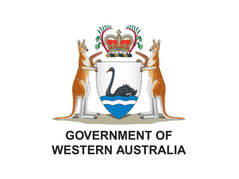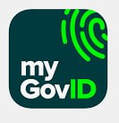|
Benefits provided to employees or their associates in addition to salary or wages are known as fringe benefits. These benefits are paid for by the employer from pre-tax earnings, making the provision of benefits attractive to employees as it may reduce their taxable income while receiving payment in other forms.
However, this isn't all good news as Fringe benefits tax (FBT) may apply based on the type of benefit provided. Employers can generally claim a tax deduction for the benefits and related tax payable, but at 47% tax, this is not the best outcome for everybody. Tax is payable because the benefits are a different form of payment by an employer instead of salary and wages. The tax is calculated on the taxable value of the benefit, which reflects the grossed-up salary the employee would have had to earn to pay for the benefits from post-tax earnings. Types of Benefits There are many different types of fringe benefits employers may provide to employees. These include:
Amounts below $300 (inclusive of GST) spent on employees on an infrequent basis, are not subject to FBT. Tax deductibility may depend on the expense. For example, entertainment expenditure (meals, movie tickets, sporting events, airline tickets) would be non-tax deductible. However, gifts such as hampers, gift vouchers and bottles of alcohol will be tax deductible. FBT Administration The fringe benefits tax year runs from 1 April to 31 March. You must then include the reportable amount for each employee on their Single Touch Payroll finalisation by 14 July, so it flows through to their annual income statement. As with all business transactions, keeping accurate records is essential to determining whether FBT applies and how much needs to be included on the employee's income statement, if any. There are two methods to calculating the FBT on benefits:
FBT on the Christmas party and gifts Christmas is an opportunity for employers to say ‘thank you’ to the team for a job well done, and to celebrate the wins. Unfortunately, Christmas expenditure can attract the interest of the taxman! Let’s take the information above and work it into a non-FBT Christmas function example; When booking a restaurant, or similar, ensure the cost per employee and their associate (e.g. spouse) is less than $300. You can also give them a non-entertainment gift such as a voucher, hamper or a bottle of wine. The gift must also be less than the $300 and not something you do often, making it an infrequent gift. If you have any questions about FBT and how it may affect your business, please don't hesitate to contact us.  On 25 October 2022, the Federal Government handed out its first budget. It was aimed at relieving the cost-of-living pressures, specifically at reducing the inflationary pressures. Whether you’re refilling the petrol tank or paying at the supermarket checkout, the higher cost of living is hitting every household hard. Across the world, everyday essentials are surging in price, up 7.2% year on year across the OECD. Unfortunately, experts predict that prices will keep rising for at least the rest of the year, and into 2023. What can you do to try to keep up with the increasing cost of living? Here are our 12 top tips: Look for ways to earn more
If prices rise by 7% this year, it won’t be easy to increase your income by the same amount. But if you can increase your income by 5%, then make up the rest through savings while also investing for the future, you can still come out on top once inflation settles down and prices stabilise. Worried about money? Talk to us. We have years of experience through many economic cycles, including previous periods of high inflation – and we’re always here to help. A capital gain (or loss) occurs when an asset is sold. The difference between the purchase price and the sale price is the gain or loss. Capital gains tax (CGT) applies to money you have made from selling an eligible asset. Capital gains tax events occur when an asset is sold, or other triggers arise, such as the loss, theft, or destruction of an asset, or creating contractual or other rights to an asset. Not all assets are subject to CGT. Common exemptions include the main residence or family home, granny flats, cars and motorcycles, personal use assets such as boats, furniture, household items or loans to family and friends. Many types of lump sum payments are also not subject to CGT, and business sales may also be exempt depending on the circumstances. Most property is subject to CGT, including land, commercial premises, rental properties, holiday houses and hobby farms. CGT also applies to shares, investments, cryptocurrency, many collectables, foreign currency and intangible assets. Visit the ATO list of CGT assets and exemptions here. There are special rules for some specific situations, for example, inheriting assets, relationship breakdown, foreign residents, insurance or compensation payments. How is the tax calculated? Tax is calculated on the net gain of an asset sale. Tax is payable on the difference between the purchase price and sale price, less any discount allowed. The type of CGT event affects how and when capital gains tax is calculated. For example, if an asset is destroyed in an accident, the CGT event occurs when the insurance payout is received. Good record keeping is key to working out capital gains tax accurately. Make sure you keep all documents related to asset purchases, including contracts, expenses valuations and disposal. CGT is calculated at the time of completing your individual, business or self-managed super fund tax return and is included in the income tax assessment. Talk to us to ensure you’re claiming all you are entitled to and not paying more tax than you should. We’ll make sure you’re receiving any exemptions, discounts or small business concessions allowed. Selling an asset and want to know more? Contact us to discuss your personal circumstances. Sign up to our newsletter to find out about helpful and insightful articles when they are published and keep up to date with important tax-related dates. Every business has a finite lifespan. Some may last for decades, and some may only last a couple of years. As the owner of a business, the life of your business is likely to be strongly aligned with your own life goals and personal plans for the future. When the time comes to sell up, it’s important to know what your goals are for the sale. Are you looking to retire? Or do you have a burning ambition to start a new venture? Planning for a sale can take up to 2 years to maximise the value of the business and get it ready for sale. This step is often missed but is extremely important. Planning is key! Define your exact goals from the sale of the business At the point of planning an exit, you need to think carefully about WHY you’re selling up and WHAT you want to achieve. This is a huge change in your life, your business career and the fortunes of your company and employees. Ask yourself what your true goals are from this exit: Do you want to retire, ease the pressure and enjoy some freedom? Has this business journey come to an end, and you need a new challenge? Do you need to free up your capital to invest in other business or personal projects? Is there a worthy successor who’s itching to jump into the hot seat? Whatever the motivation for a business exit may be, make sure to consider your options and decide on some concrete end goals. Who is going to take over the business?
Rarely are business sales a simple process and by putting the company on the market you’re opening yourself up to a complicated process of negotiation, financial agreements and legal wrangling. Knowing who will take over the business can be difficult to predict, but you do have several options when it comes to the end outcome. For example, you could:
Selling your business is a big move, it’s invaluable to have the best possible support and advice to guide you through the sale process. Run your exit goals past us to advise you on implications you may not have thought of, and any tax implications that may affect your decision. As a founder, it can be difficult to be objective about your business. External advisers have the advantage of being able to look from the outside in, with real objectivity. This helps you get independent, expert advice on your exit goals, your strategy and your tax planning. If you’re thinking about selling up and moving on, please do get in touch. We can give you the advice you need and set you on track for a successful and profitable sale. Working with well-planned budgets is an incredibly important step in managing and growing a successful business and making sure your finances stay stable. Dealing with the twists and turns of managing money is a normal part of running a business. It can be hard work. It is much easier when you’ve got a budget to track your performance and spending. Our top tips are:
Creating budgets isn’t fun, and that’s okay!We understand putting together data and messing around with spreadsheets to create budgets isn’t everyone’s favourite thing. The Preston Corporate Accounting team froths for them. That’s because we’re accounting and bookkeeping nerds! Excel spreadsheets bring us joy and excitement…and we know we’re not normal. Get to know your numbersWhen setting up a budget, whether for the whole business or for a project, you need good numbers. You want to know what money is coming in and what money is going out. This includes income streams, staff expenses, overheads, taxes and fees, and general spending. It gives you a good baseline and foundation to work and grow from. You need at least ballpark figures, but we recommend you take time to look through your accounts to dig out accurate figures, so you’re not guessing. It may be time-consuming but very much worth it. You will want a budget that tells you:
Set your budget and track it over timeOnce you have baseline costs, you have the information to make better plans.
Keep a close eye on budgets and project cashflow Your budget should be a living document. You should aim to stay within the initial costs. Price changes, inflation, availability and other factors can affect spending and that’s okay! Budgets aren’t a ‘set and forget’ kind of thing. You want to keep tracking how you’re performing against your budget and how your cashflow is going. Understanding the performance of your business in real-time will help you avoid overspending or running out of cash. It also shows you your gaps and your opportunities. For example, you may find that buying certain software costs a few hundred dollars but saves you hours in staff time that can now be redirected to other profit-growing activities. You never want to run a business or project with your fingers crossed because it does not always work out well in the end.
You always want to be proactive with your cashflow and stop issues as soon as they appear. Knowing your budget and your performance gives you more flexibility and the ability to adapt when new things come up. Lots of businesses fold because they didn’t track their budget and didn’t understand how they needed to shift and change. Your budget sets you up to win. A few key things to think about:
Whether you’re thinking about starting a business or already running one, we are here to support you with all your financial needs. We can work with you to build solid, workable budgets that you can easily use and grow with. Cryptocurrencies like Bitcoin, Ethereum, Litecoin and Ripple have risen in popularity, and a growing number of people are dipping their toes into trading on the crypto market
It covers how crypto transactions are calculated, calculation programs to save you money and the tax implications of crypto trading. If you are time-poor, we will skip to the article's key point. If you want to save money, you seriously need to use a crypto tax calculation program like Crypto Tax Calculator. It does the time-consuming data crunching and gives you the tax reports we need. If you choose not to use something like this and make lots of trades (even just lots of $1 transactions), please be kind to us when your personal tax return costs you $1000 this year for us to complete. Okay, so here’s more details for those with more time. All crypto transactions are calculated individuallySome quick background on why crypto trading might cost you in accounting fees. Every time you buy and sell a cryptocurrency or crypto portions, that transaction’s loss or gain must be calculated. Individually. Every time. Bought twenty portions in Bitcoin when the value was low and sold them when the value rose later that day? That’s twenty transactions to be calculated. The calculations are easy, but they add up, especially if you’re regularly trading and following the trends. They can take hours and hours for our team, which means higher fees for you. We don’t want you to be shocked if you get a larger bill than expected. Save on fees by using a crypto tax calculation programWe recommend Crypto Tax Calculator. It integrates with most crypto trading platforms and is tailored to the tax needs of Australian investors. Subscriptions start from $49 per year (much less than additional accounting fees). It provides all the data needed for compliant record-keeping and calculating your tax liability. Whilst there are other programs, Crypto Tax Calculator is the one we and other accounting firms around Australia have found to be the best. You’re welcome to research for yourself and find one that works for you. Why does crypto trading have tax implications?In Australia, crypto is treated as an ‘asset’, like investing in shares, and is assessed under the Capital Gains Tax rules. If you buy and sell within twelve months, 100% of the gain is assessable as capital gains. If you hold the investment for over twelve months, the gain is reduced by 50%, and you are taxed on the other 50%. Any losses can offset any capital gains in the current financial year or be carried forward to be used to offset future capital gains. Are you in the ‘business’ of crypto trading? There is another method of calculating the profits and losses on trading crypto, but it depends on whether you are in the business of trading crypto or just investing. We look forward to assisting you this tax year. If you have any questions, please do not hesitate to contact the Preston Corporate team.
The Government of Western Australia has recently announced the next phase of COVID-19 Small Business Hardship Grants (Level 2).
Eligibility To be eligible for the Small Business Hardship Grants, businesses must:
How Much Do You Receive? Eligible applicants will receive a tiered grant payment, dependant on the number of Full Time Equivalent (FTE) employees of the business. For the purpose of this calculation, the business owner is excluded from the FTE calculation. The following grant tiers are available:
https://www.smallbusiness.wa.gov.au/coronavirus/grants/hardship-grant. Applications close at 4pm AWST on Thursday 30 June 2022. If you have any questions or need any assistance or support with this, please contact our office on 9367 4199. Is your business Cyber Secure?
You can check now with the Cyber Security Assessment Tool. The Department of Industry, Science, Energy and Resources developed the assessment tool to help improve cyber security skills among Australian small and medium businesses. With the assessment tool, you can:
Read more about the tool at business.gov.au. Adopting effective cyber security processes is more important than ever.
Three cyber threats to watch out for: 1. Destructive malware The Australian Cyber Security Centre (ACSC) has identified an increase in destructive malware targeting businesses. To protect your business from malware:
2. Ransomware Cybercriminals are increasingly using ransomware to lock files so the owner of the device can no longer access them. Signs that you’ve been affected by ransomware include: pop-up messages requesting funds or payment to unlock files; you cannot access your devices, or your login doesn’t work for unknown reasons; files request a password or a code to open or access them. Alternatively, files being moved to different locations on a device, or files suddenly having their names or icons changed. This all indicates possible ransomware intrusion. To protect your business from ransomware:
3. Targeting of network devices The ACSC has identified an increase in targeting of Cisco devices using the Smart Install feature worldwide, including in Australia. To protect your business from being a target:
ASIC now requires all company directors to apply for Director ID numbers. Existing directors prior to 30th November 2021 have until 30th November 2022, new directors until 4th April 2022 have 28 days from their appointment to apply for their number. New directors from 5th April 2022 onward will need to apply for the ID number prior to their appointment. Whether your application deadline is coming up or not, it is certainly worth obtaining this one-off ID number and getting the process out of the way. To make things easier for you we have provided some instructions below: There are two parts to the process, the myGovID app set-up, and the Australian Business Registry Services (ABRS) application process. Step 1. MyGovID app (If you already have the app, please skip ahead to Step 2) If you don’t have the app you will need to download it and set it up as you need it to login to the government website to apply for the DIN. The app icon looks like this. If you don’t have the app, here are the instructions: A. Download the myGovID app from the App store (iPhones) or Google Play (Samsungs) A. Enter your detailsOpen the myGovID app and follow the prompts. You will need to give your full name, date of birth and email address This must not be a shared email address. B. Add your identity documentsA Standard or Strong identity strength is required to apply for the Director’s ID Number (DIN). Follow the prompts to add your Australian identity documents:
Step 2. ABRS Website (the actual application process) When you have the myGovID app set up, you will need to go to the following website (Australian Business Registry Services or ABRS) and follow the instructions on the page. When you login using the myGovID app, you will be provided with a code on the PC screen which you will need to input into the app. The ABRS website link is https://www.abrs.gov.au/director-identification-number/apply-director-identification-number You will need to have some information the ATO knows about you when you apply for your director ID:
Once you are successful in obtaining the number, could you please provide me with it, as I need to update our system.
Should you have any issues with the application process, please contact our office on 9367 4199 or at support@prestoncorporate.com.au. |
AuthorHelpful articles written by our knowledgeable and experienced team. Archives
March 2024
Categories |
Need an appointment?
Looking for help with your business? Need more time to focus on what matters to you? Need advice on growing your business? Preston Corporate provides a wide range of services designed to give you the freedom and the growth you seek.
Copyright © 2022
Located on the Ground Floor, Suite 1, 8 Preston Street, Como WA 6152
Liability limited by a scheme approved under Professional Standards Legislation
Located on the Ground Floor, Suite 1, 8 Preston Street, Como WA 6152
Liability limited by a scheme approved under Professional Standards Legislation














 RSS Feed
RSS Feed
